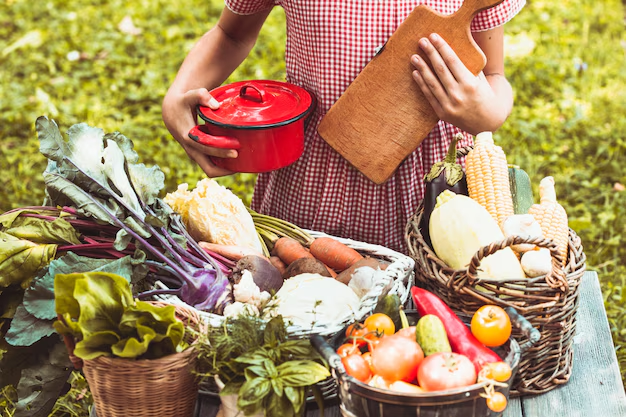Discovering the Essentials of the Local Food Promotion Program
In our quest for fresher, more sustainable food sources, the Local Food Promotion Program (LFPP) stands out as a vital initiative aimed at enhancing local food economies. As consumers increasingly demand transparency and traceability in their food choices, this program bridges the gap between local producers and communities. But what exactly is it, and how does it benefit both farmers and consumers?
The LFPP is a federal grant initiative designed to strengthen the infrastructure and viability of local and regional food systems. Administered by the United States Department of Agriculture (USDA), it primarily supports projects that increase the availability of locally sourced food to communities, thereby promoting food security and economic growth. The program provides financial assistance to a range of entities including farmers, cooperatives, and nonprofit organizations, enabling them to improve processing, distribution, and marketing efforts.
Key Features of the Local Food Promotion Program
Enhancing Local Economies: By supporting local food producers, the LFPP helps invigorate regional economies. The increased demand for local products can lead to job creation and improved livelihoods for farmers and workers in the food sector.
Sustainable Practices: Emphasizing sustainable and efficient uses of resources, the program encourages practices that are not only environmentally friendly but also economically viable.
Community Engagement: The LFPP fosters better connections between producers and consumers, strengthening community ties. It supports projects that educate the public about the benefits of local food systems and how they contribute to healthier communities.
Diverse Funding Opportunities: Organizations can apply for planning grants or implementation grants, depending on their project stage and scope. These funds may cover a wide array of initiatives, from feasibility studies to full-fledged marketing campaigns.
Such programs are essential when navigating the broader landscape of government aid and financial assistance. As the LFPP demonstrates, there are structured ways to support local commerce and sustainable practices, benefiting not just individual participants, but whole communities. But what if you're looking beyond local food systems? Exploring other financial assistance options can be equally empowering.
Expanding Your Financial Toolkit
If you're inspired by the goals and strategic support of the LFPP, there are many other avenues to explore that can further your personal or organizational goals:
Government Aid Programs: Learn about diverse funding opportunities beyond agricultural support, including small business loans, disaster relief funds, and rural development grants.
Educational Grants: These can open pathways to educational growth and opportunities, fostering learning and skill development across various fields.
Debt Relief Options: For those seeking to alleviate personal or organizational financial burdens, understanding debt relief alternatives can be a lifesaver. Various programs offer support to mitigate debt and develop sustainable financial practices.
Credit Card Solutions: Enhancing your financial literacy around credit management can lead to better financial health, allowing you to manage expenses and improve credit scores effectively.
As you explore these resources, remember that the journey to financial well-being is as much about strategic planning and making informed choices as it is about access to opportunities. A well-rounded financial plan should incorporate diverse elements, including both direct grants like the LFPP and broader economic tools.
Here’s a quick list of important programs and resources to consider:
- 🌱 Local Food Promotion Program (LFPP): Build your local food economy.
- 🚜 USDA Grants: Explore agricultural and rural development funding.
- 📚 Federal Student Aid: Access educational funding opportunities.
- 💼 Small Business Administration (SBA) Loans: Secure financing for business growth.
- 🏡 HUD Housing Grants: Assist with housing needs and support.
- 💳 Credit Counseling Services: Improve debt management and credit health.
Empowering yourself with knowledge and resources is a pivotal step toward achieving sustainability and financial security. Whether through local food systems or broader financial assistance avenues, there are opportunities awaiting those who seek them diligently.

- A Comprehensive Guide To The Senior Companion Program
- Comprehensive Guide To The Biotechnology Risk Assessment Research Grants Program
- Agriculture Innovation Center Demonstration Program: Your Comprehensive Guide
- The Agriculture And Food Research Initiative - Food Safety Challenge Area: A Guide For Consumers
- Agriculture And Food Research Initiative - Childhood Obesity Prevention: A Comprehensive Guide
- Understanding Federal Transit Grants For Rural Areas
- Understanding The Homeless Veterans' Reintegration Program
- Unleashing Opportunities With The YouthBuild Program
- Understanding Native American Housing Block Grants
- Unleashing The Residential Rehabilitation Assistance Program: The Definitive Guide